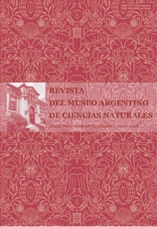Heterobathmia pseuderiocrania (Heterobathmiina): mouthparts, mouthpart sensilla, and comparison with other non-glossatan suborders (Insecta, Lepidoptera)
Resumen
The mouthparts of Heterobathmia pseuderiocrania are primitive and well adapted for collecting and grinding pollen of Nothofagus. The five- segmented maxillary palps show specialized structures for collecting pollen: spatula-shaped sensilla chaetica. The epipharynx and the teeth on the mandibles grind the pollen to powder before ingestion. Mechanoreceptive aporous sensilla chaetica are located on the labrum, the galeae, the maxillary and labial palps. Proprioceptive sensilla campaniformia are observed only on the maxillary palps. Two types of gustative uniporous sensilla basiconica are observed on the galeae and one type at the apex of the maxillary palps. The apical segment of the labial palps shows uniporous sensilla chaetica and multiporous sensilla basiconica. Compared to the suborder Zeugloptera, the species of which are also pollen-grinders, the suborder Heterobathmiina, as exemplified by H. pseuderiocrania, is less specialized: presence of one type of pollen-collecting structures; absence of large sensilla placodea (perforated heart-shaped organ and perforated oval area) on the labial and maxillary palps, sensilla present in Micropterix calthella. In view of these differ-ences, the Heterobathmiina are closer to the suborder Glossata. H. pseuderiocrania reveals several autapomorphies: absence of linking legulae on the galeae, which are clearly outlined structures in the Zeugloptera and very developed in the Glossata; presence of long uniporous sensilla basiconica on the apex of the galeae, and uniporous sensilla chaetica on the labial palps.
Texto completo:
PDFEnlaces refback
- No hay ningún enlace refback.

This work is licensed under a Creative Commons Attribution 3.0 License.

